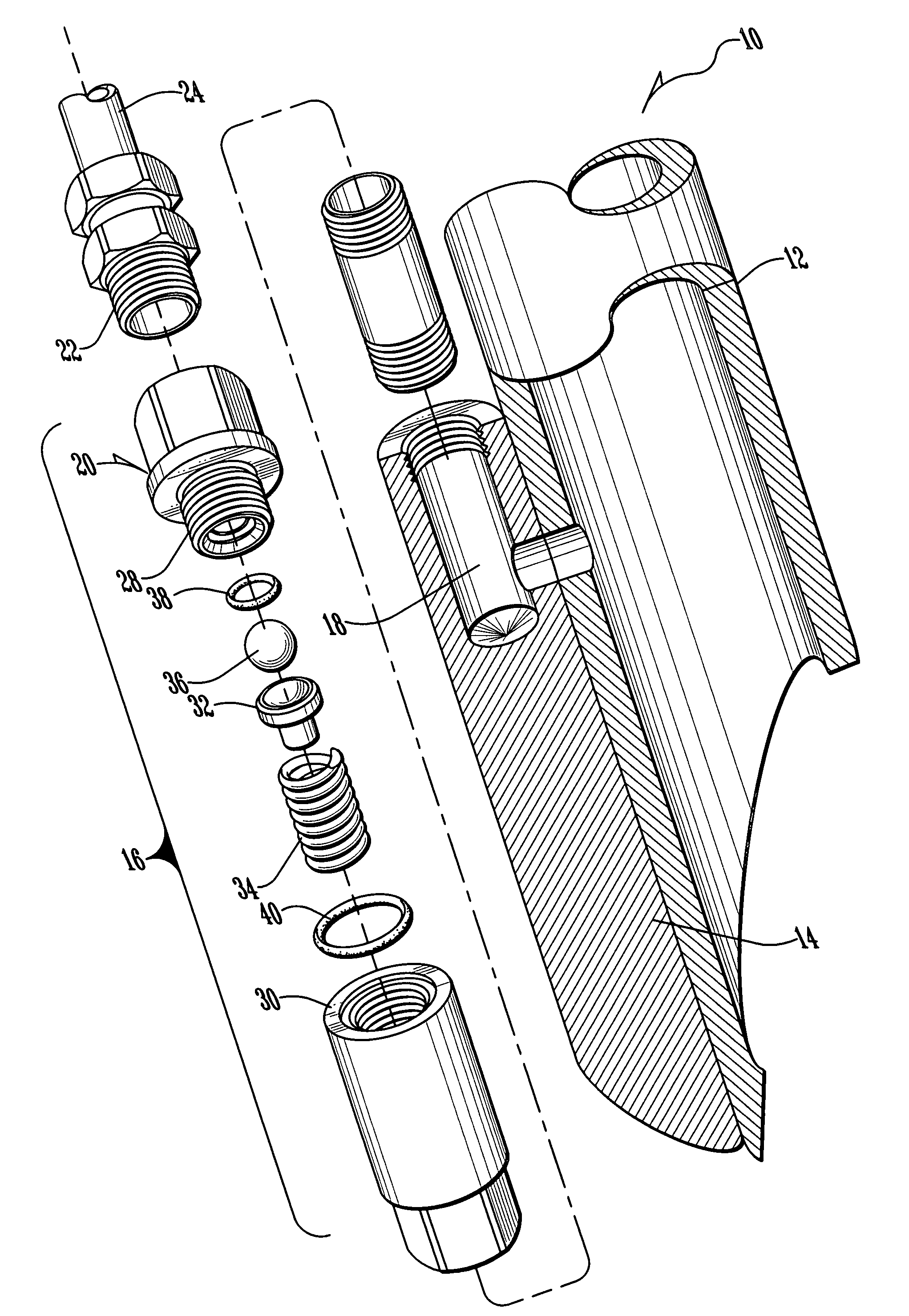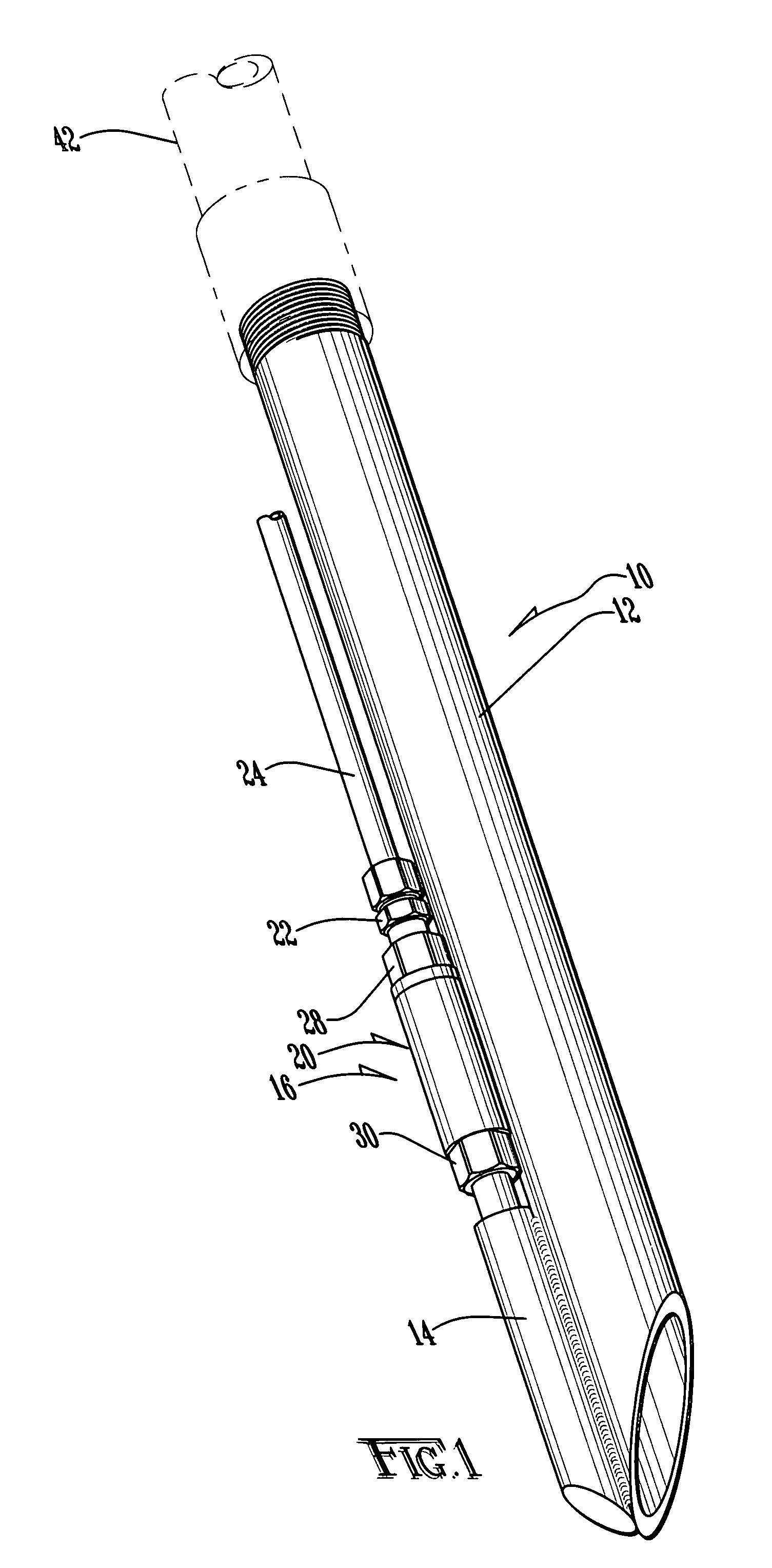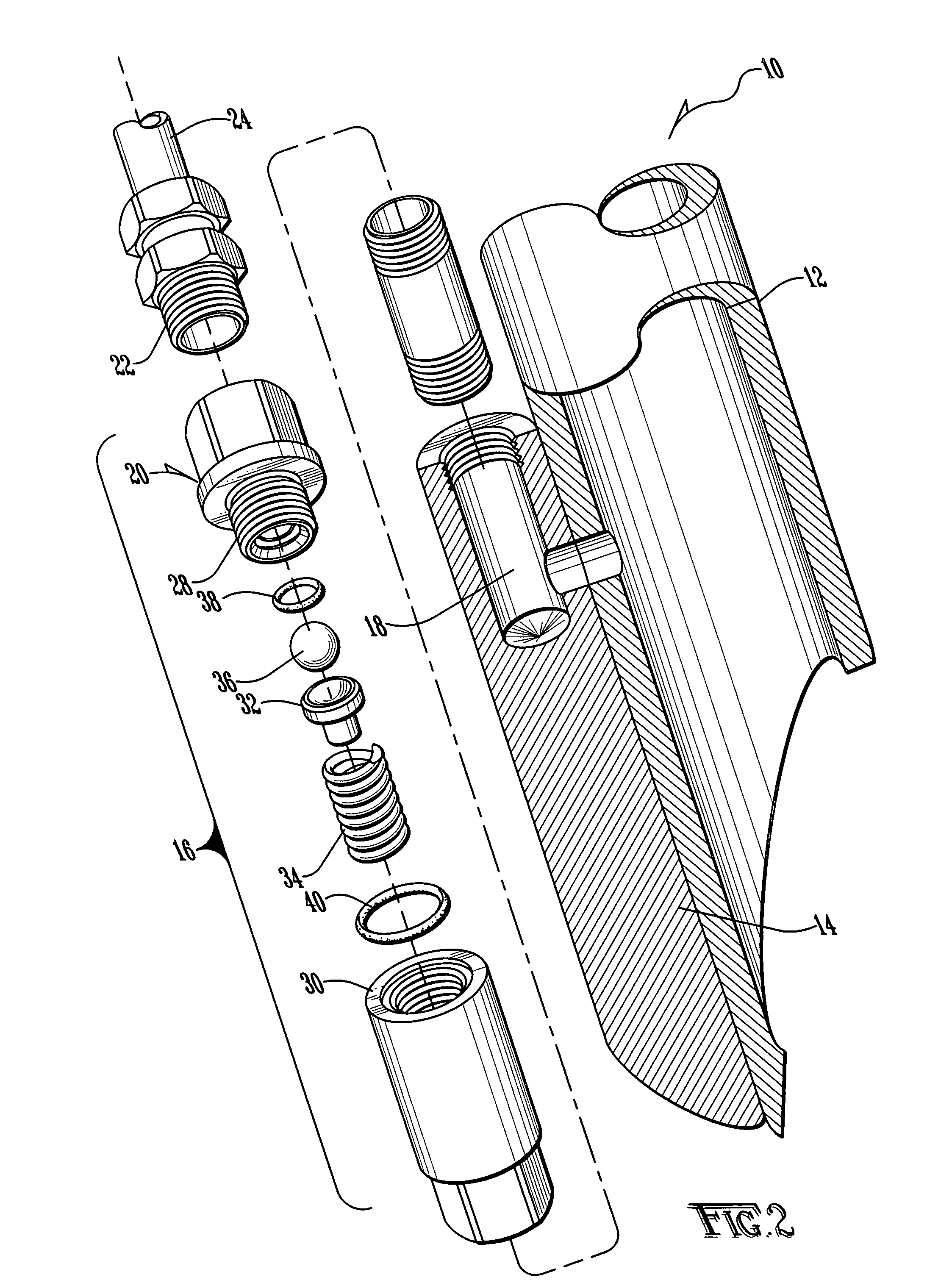Apparatus and method for increasing well production
a technology of gas recovery system and equipment, applied in the direction of fluid removal, well accessories, sealing/packing, etc., can solve the problems of not being particularly useful in the recovery of cbm, high flammability of methane, and release of methane during coal mining, so as to reduce formation damage and increase gas yield
- Summary
- Abstract
- Description
- Claims
- Application Information
AI Technical Summary
Benefits of technology
Problems solved by technology
Method used
Image
Examples
Embodiment Construction
[0034]With reference to FIG. 1, the downhole injection subassembly 10 of a preferred embodiment of the present invention for use in connection with CBM extraction may be described. Although the discussion of the preferred embodiment will focus on CBM extraction, it may be understood that the preferred embodiment is applicable to other gas extraction techniques, including without limitation tight sand gas extraction.
[0035]Downhole injection subassembly 10 is designed for deployment at the end of a production tube for placement in a well. The external portions of downhole injection subassembly 10 are composed of production tube tip 12 and injection sheath 14. In the preferred embodiment, production tube tip 10 is a tube constructed of steel or other appropriately strong material, threaded to fit onto the downhole end of a production tube. In the preferred embodiments, production tube 10 is sized to fit either of the most common 2⅜ inch or 2⅞ inch production tube sizes used in CBM extr...
PUM
 Login to View More
Login to View More Abstract
Description
Claims
Application Information
 Login to View More
Login to View More - R&D
- Intellectual Property
- Life Sciences
- Materials
- Tech Scout
- Unparalleled Data Quality
- Higher Quality Content
- 60% Fewer Hallucinations
Browse by: Latest US Patents, China's latest patents, Technical Efficacy Thesaurus, Application Domain, Technology Topic, Popular Technical Reports.
© 2025 PatSnap. All rights reserved.Legal|Privacy policy|Modern Slavery Act Transparency Statement|Sitemap|About US| Contact US: help@patsnap.com



